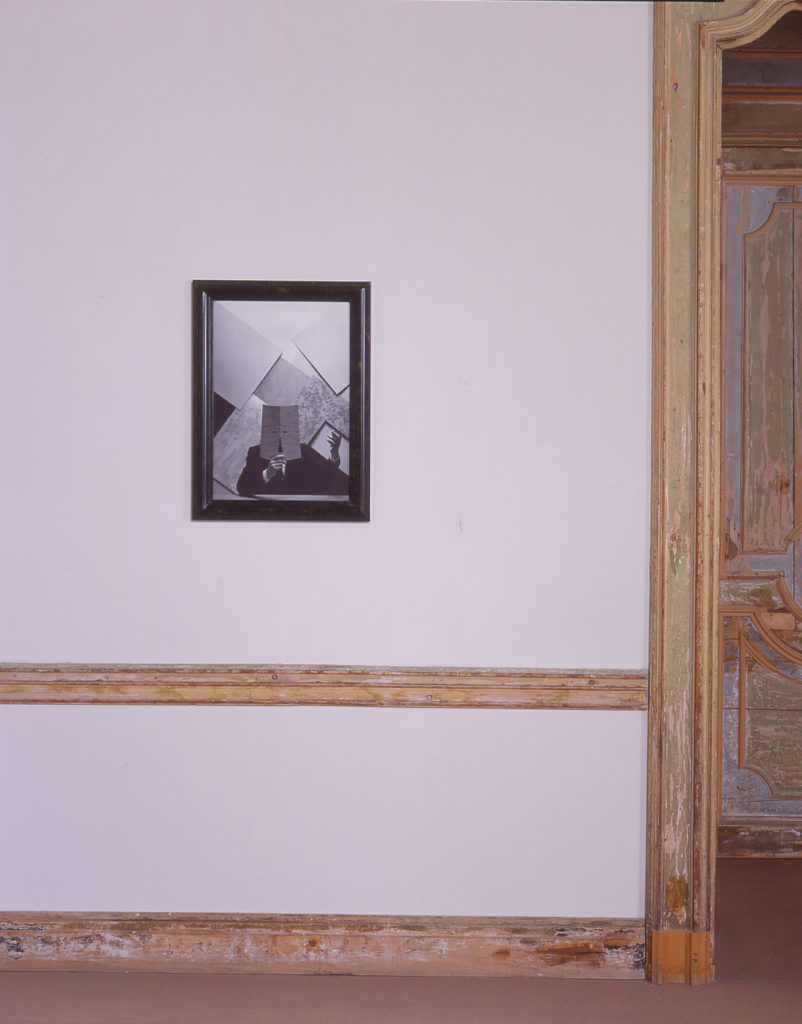Jan Vercruysse
Jan Vercruysse focuses on the redefinition of the spiritual nature of art. He believes that art should not be understood as a tool of communication, and that artworks cannot be understood through language. Instead, for Vercruysse the place of art is Atopia, a non-place that does not need to be defined in terms of reality, in opposition to the idea of Utopia. Vercruysse, who has a background in poetry, early on created photographic works, often in the form of self-portraits, in which he considered each work a phrase in a visual discourse, similar to the idea of the sonnet. Portret van de Kunstenaar door hemzelf (XII) (Portrait of the Artist by Himself – XII), 1984, presents the image of the Artist in an oratorical pose, his face obscured behind a mask, which is a significant element of the representation. Together with the gesture that transmits no message, the mask points out the impossibility of communication between artist and viewer. An act of disclosure, the self-portrait is at the same time an act of dissimulation that hides the Artist. Like other works in the series to which this work belongs, the “portrait” is a lithograph of an original photograph, and thus is presented as a reproduction of itself.
A luxurious red velvet chaise longue and a series of frames hung on the wall in a careful arrangement make up Grande Suite (Grand Suite), 1986. Incomplete, the frames contain no images and remain a field of infinite potential, available to contain the totality of art. The installation defines a pure space for an art that has no need to accommodate life. Significantly, the chaise longue is empty, staging an absence that is a constant element in Vercruysse’s work.
During the 1980s, Vercruysse concentrated mainly on a body of works entitled Tombeaux. The French term (“tombstone”) denotes a musical piece or poem dedicated to something or someone that no longer exists. The “Constellation,” as the artist calls a group of Tombeaux—works installed in a specific order, and belonging to the collection of the Castello di Rivoli—is made up of shelves and wind instruments (three French horns, three trombones, three tubas) all made out of cobalt-blue Murano glass. The instruments are not placed on the shelves, but hang from thin leather belts on the wall. Instead, the shelves are attached high up on the wall, above the instruments, so that the narrow space that separates them from the ceiling is incapable of accommodating the objects to which they apparently have been assigned. As in other works by the artist, there is an allusion not to functionality, but rather to its disappearance. The glass wind instruments are sound machines that have been silenced, their original function diametrically altered, to make not sound, but silence. In the silence one can construct the non-place that transcends every other place and allows meditation.
[MB]


